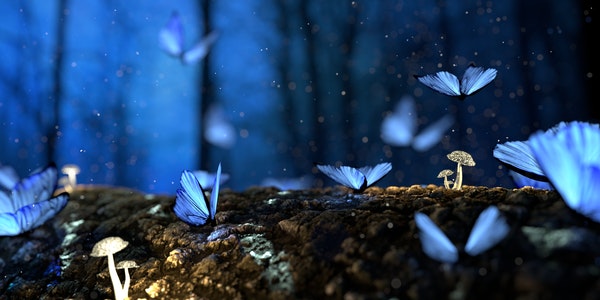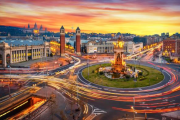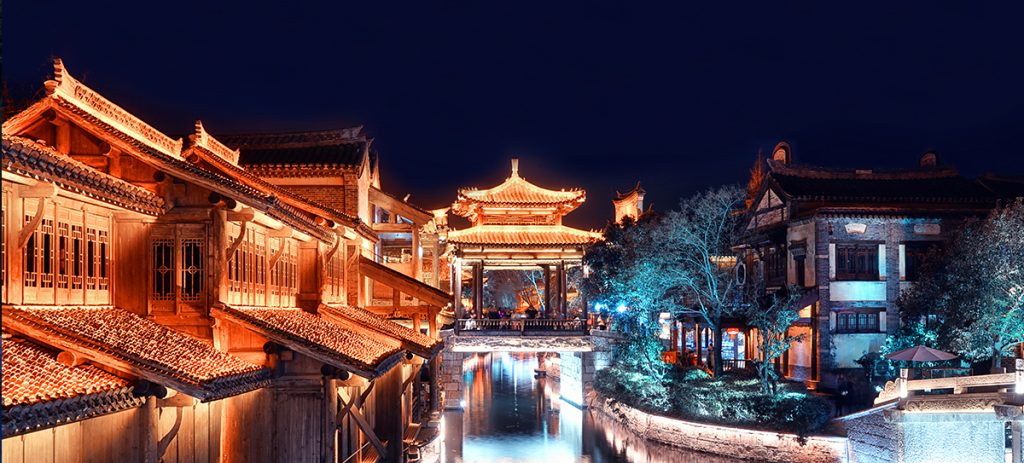 The importance of landscape lighting
The importance of landscape lighting
The success of landscape lighting lies in full respect for the original building landscape. The overall warm color lighting creates a peaceful and calm space atmosphere for the square. The use of multiple lighting methods provides layered and planned lighting for the landscape of each level of the square, so that each scene plays its own role in the decoration of the overall space. Effect. Formed a visual effect of clear spatial hierarchy and balanced lighting intensity. At the same time, attention is paid to the environmental integration of the individual square and the city as a whole in lighting effects and historical humanities, emphasizing the detailing and functional human design. The case of night scene lighting in Xiehe Square provides us with many aspects of inspiration. Lighting can not only add artistic color to the urban landscape, but also play a role in supporting the guidance system. All aspects of night lighting planning require designers to start from human visual psychological and physiological characteristics, which can bring a richer and more humanized artistic experience to the night scenery of the city and people’s travel.
Lighting Design Concept for landscape area
 The main content of the lighting in the landscape area is to create a more suitable viewing mood and scope through the lighting layout and light and shadow effects of the night garden. The purpose is to enhance the recognition of objects and create an atmosphere of the environment, improve the safety of night travel, and ensure the normal development of residents’ night activities. The most basic requirement is to ensure the safety of tourists. The specific standard is to be able to clearly identify the direction and scenery in the park, and carry out various leisure and entertainment activities based on this; and in order to improve the quality of the landscape, create a unique night garden For the landscape, on the premise of meeting the above requirements, as far as possible, choose lamps with beautiful shapes and soft colors to make them integrate with the surrounding scenery. According to the visual requirements, the roads, sites, water features, plants, sculptures and buildings in the scenic area should obtain good visual effects. The light source should have the characteristics of long life, high light efficiency, strong penetrability and energy saving. Metal halide lamps, high-pressure sodium lamps and energy-saving lamps should be used.
The main content of the lighting in the landscape area is to create a more suitable viewing mood and scope through the lighting layout and light and shadow effects of the night garden. The purpose is to enhance the recognition of objects and create an atmosphere of the environment, improve the safety of night travel, and ensure the normal development of residents’ night activities. The most basic requirement is to ensure the safety of tourists. The specific standard is to be able to clearly identify the direction and scenery in the park, and carry out various leisure and entertainment activities based on this; and in order to improve the quality of the landscape, create a unique night garden For the landscape, on the premise of meeting the above requirements, as far as possible, choose lamps with beautiful shapes and soft colors to make them integrate with the surrounding scenery. According to the visual requirements, the roads, sites, water features, plants, sculptures and buildings in the scenic area should obtain good visual effects. The light source should have the characteristics of long life, high light efficiency, strong penetrability and energy saving. Metal halide lamps, high-pressure sodium lamps and energy-saving lamps should be used.
Landscape area lighting-way
The night scene lighting of buildings, the most commonly used are flood lighting, contour lighting, internal transmission lighting and so on. The flooding of the building facade is to directly illuminate the building facade with a certain angle calculated by the design according to the design, to reshape the image of the building at night. The effect can not only show the entire appearance of the building, but also effectively express the building’s shape, three-dimensional feeling, stone decoration materials and textures, and even decorative details.
Landscape area lighting illuminance requirements
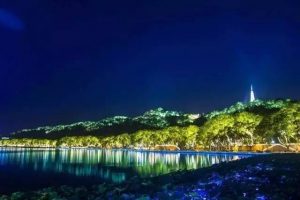 Energy saving and environmental protection, alleviating energy shortages, controlling environmental pollution, and improving the overall quality and level of urban lighting in our country are imminent. Landscape lighting is by no means brighter and more recognized by industry insiders. Therefore, the acceptance of lighting power density (LPD) should be limited during acceptance to improve the light efficiency of the lighting system. The unit power limit (W / m) of electricity used in landscape lighting of buildings or structures shall not exceed the provisions in the following table. Emergency protection and maintenance documents and account management. This specification applies to the city’s landscape lighting facilities and their associated power supply and distribution facilities (including cables). The maintenance and maintenance of landscape lighting facilities and power supply and distribution facilities, in addition to complying with the provisions of this specification, shall also comply with the relevant regulations of the country, Shanghai region and industry. When flood lighting is used in the landscape lighting of buildings and structures, the average illuminance of the illuminated building facade, the illuminance on the windows of the residential building, and the light intensity of the luminous body (light source or lamp) directly seen indoors, the building or structure of the commercial street The illuminance of landscape lighting must not exceed the illuminance value specified by the International Commission on Lighting (CIE). For landscape area light illumination. The following references
Energy saving and environmental protection, alleviating energy shortages, controlling environmental pollution, and improving the overall quality and level of urban lighting in our country are imminent. Landscape lighting is by no means brighter and more recognized by industry insiders. Therefore, the acceptance of lighting power density (LPD) should be limited during acceptance to improve the light efficiency of the lighting system. The unit power limit (W / m) of electricity used in landscape lighting of buildings or structures shall not exceed the provisions in the following table. Emergency protection and maintenance documents and account management. This specification applies to the city’s landscape lighting facilities and their associated power supply and distribution facilities (including cables). The maintenance and maintenance of landscape lighting facilities and power supply and distribution facilities, in addition to complying with the provisions of this specification, shall also comply with the relevant regulations of the country, Shanghai region and industry. When flood lighting is used in the landscape lighting of buildings and structures, the average illuminance of the illuminated building facade, the illuminance on the windows of the residential building, and the light intensity of the luminous body (light source or lamp) directly seen indoors, the building or structure of the commercial street The illuminance of landscape lighting must not exceed the illuminance value specified by the International Commission on Lighting (CIE). For landscape area light illumination. The following references
Environmental District:
1. Areas with dark environment, such as parks and natural scenic areas:
2.Areas with low ambient brightness. If the city’s smaller streets and areas outside the rural area:
3. Areas with medium environmental brightness, such as the surrounding areas (near suburbs) of general streets in cities;
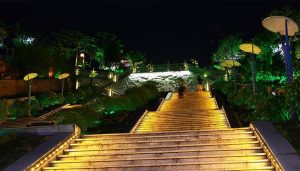 4. Areas with high ambient brightness. Such as city streets or squares with mixed residential and commercial areas. “If using public (road) lighting fixtures, this value can be increased to 11x.” If using public (road) lighting fixtures, this value can be increased to 500cd.La is adapted to brightness (unit is cd / m2), 0.1 is no road When lighting, 1 is M5 road lighting: v4 / M3 road lighting: M2 / M1 road lighting. In addition, the light should not be penetrated into the indoor place where people live or work at night: the lamps should be installed according to the design requirements, the position of the lamp and the direction of illumination should be controlled, and the overflow light and interference light should be controlled. The stray light and interference light generated by the light lamp are reduced to a minimum: except for the use of lasers, searchlights or sky rose lights on the top of the landmark building. The top of other tall buildings must not be used.
4. Areas with high ambient brightness. Such as city streets or squares with mixed residential and commercial areas. “If using public (road) lighting fixtures, this value can be increased to 11x.” If using public (road) lighting fixtures, this value can be increased to 500cd.La is adapted to brightness (unit is cd / m2), 0.1 is no road When lighting, 1 is M5 road lighting: v4 / M3 road lighting: M2 / M1 road lighting. In addition, the light should not be penetrated into the indoor place where people live or work at night: the lamps should be installed according to the design requirements, the position of the lamp and the direction of illumination should be controlled, and the overflow light and interference light should be controlled. The stray light and interference light generated by the light lamp are reduced to a minimum: except for the use of lasers, searchlights or sky rose lights on the top of the landmark building. The top of other tall buildings must not be used.
Lights in landscape area
First: incandescent lamps
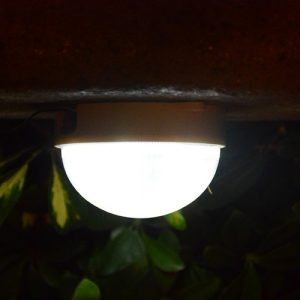 1.Ordinary incandescent lamp: its basic components are filament, bulb, gas and lamp holder. The filament of modern incandescent lamps is made of tungsten with a high ignition point (3680K) and a slow evaporation rate. The average luminous efficiency of incandescent lamps is only about 12lm / W, but incandescent lamps are by far the most widely used light source, because they can be used directly on standard power sources, and they are bright when they are turned on. At present, the main application of incandescent lamps is still home lighting, and places that require dense low operating voltage lamps, such as flashlights, console lighting, etc. Typical life expectancy (related to efficiency) ranges from tens to hours.
1.Ordinary incandescent lamp: its basic components are filament, bulb, gas and lamp holder. The filament of modern incandescent lamps is made of tungsten with a high ignition point (3680K) and a slow evaporation rate. The average luminous efficiency of incandescent lamps is only about 12lm / W, but incandescent lamps are by far the most widely used light source, because they can be used directly on standard power sources, and they are bright when they are turned on. At present, the main application of incandescent lamps is still home lighting, and places that require dense low operating voltage lamps, such as flashlights, console lighting, etc. Typical life expectancy (related to efficiency) ranges from tens to hours.
2.Tungsten halogen lamps: In ordinary incandescent lamps, the high temperature of the filament causes the tungsten to evaporate, and the evaporated tungsten is deposited on the bubble shell, resulting in the phenomenon that the bubble shell is black. Iodine tungsten lamp was invented in 1959, using the principle of halogen halogen cycle to eliminate blackening. Compared with ordinary incandescent lamps, the light color is whiter, and the light efficiency is higher. Halogen tungsten lamps are widely used in automotive lighting, projection systems, special spotlights, low-pressure floodlights, stage and studio lighting.
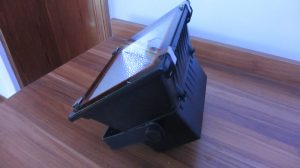 3.Reflective incandescent lamp: This kind of lamp has a metal reflective coating on the inner surface of the glass bulb to make the light shine in a predetermined direction. This internal reflection. The device will not be damaged, corroded or polluted, so the lamp can be kept. High light output. At the same time, the lamp design can be simplified. The most commonly used lamps are MR, PAR, and R lamps. It is a kind of light source, because it can be used directly on the standard power supply, it will light up when it is powered on. At present, the main application of incandescent lamps is still home lighting, and places that require dense low operating voltage lamps, such as flashlights, console lighting, etc. Typical life expectancy (related to efficiency) ranges from tens to hours.
3.Reflective incandescent lamp: This kind of lamp has a metal reflective coating on the inner surface of the glass bulb to make the light shine in a predetermined direction. This internal reflection. The device will not be damaged, corroded or polluted, so the lamp can be kept. High light output. At the same time, the lamp design can be simplified. The most commonly used lamps are MR, PAR, and R lamps. It is a kind of light source, because it can be used directly on the standard power supply, it will light up when it is powered on. At present, the main application of incandescent lamps is still home lighting, and places that require dense low operating voltage lamps, such as flashlights, console lighting, etc. Typical life expectancy (related to efficiency) ranges from tens to hours.
4.MR lamp is a representative of low-voltage tungsten halogen lamp, the working voltage is 6V / 12V / 24V. Under the same light source size, multiple beam angles and power combinations can be created by changing the reflector. This light source has a compact structure and can be used in areas where there are strict restrictions on the specific volume.
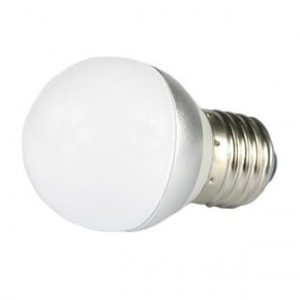 5.The PAR lamp is a pressed bulb reflection type incandescent lamp. The parabolic reflector glass and the front glass lens surface are pressed and formed. On the inner surface of the glass mirror, vacuum-evaporated aluminum is generally used as the reflection material, and the filament is located at the focal point of the mirror. The mirror and the lens surface are integrated by sealing, which can resist temperature changes and rain and snow. PAR lamps are available in different sizes, including low-voltage PAR36 and standard voltages PAR20, PAR30, PAR38, PAR46, PAR56, PAR64. Some small PAR lamps are susceptible to water erosion and can be used to seal luminaires to ensure long-term use. The PAR lamp series is used to meet the requirements of precise light control and creation of high brightness. .
5.The PAR lamp is a pressed bulb reflection type incandescent lamp. The parabolic reflector glass and the front glass lens surface are pressed and formed. On the inner surface of the glass mirror, vacuum-evaporated aluminum is generally used as the reflection material, and the filament is located at the focal point of the mirror. The mirror and the lens surface are integrated by sealing, which can resist temperature changes and rain and snow. PAR lamps are available in different sizes, including low-voltage PAR36 and standard voltages PAR20, PAR30, PAR38, PAR46, PAR56, PAR64. Some small PAR lamps are susceptible to water erosion and can be used to seal luminaires to ensure long-term use. The PAR lamp series is used to meet the requirements of precise light control and creation of high brightness. .
Second:the gas discharge light source
(1) Fluorescent Lamps-In the formation of various light sources, fluorescent lamps dominate commercial and industrial lighting. Through the innovation of light source design, the improvement of fluorescent powder and the application of electronic control circuits, the performance of fluorescent lamps has been continuously improved. The main type of fluorescent lamp is straight tube fluorescent
(2) The PAR lamp is a pressed bulb reflection type incandescent lamp. The parabolic reflector glass and the front glass lens surface are pressed and formed. On the inner surface of the glass mirror, vacuum-evaporated aluminum is generally used as the reflection material, and the filament is located at the focal point of the mirror. The mirror and the lens surface are integrated by sealing, which can resist temperature changes and rain and snow. PAR lamps are available in different sizes, including low-voltage PAR36 and standard voltages PAR20, PAR30, PAR38, PAR46, PAR56, PAR64. Some small PAR lamps are susceptible to water erosion and can be used to seal luminaires to ensure long-term use. The PAR lamp series is used to meet the requirements of precise light control and creation of high brightness.
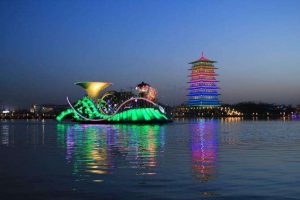 (3) Compact fluorescent lamps. The standard diameter of straight tube fluorescent lamps is 16mm (T5), 26mm (T8), 38mm (T12),The most commonly used lamp lengths are 600mm, 1200mm, and 1500mm. The most important factor determines the characteristics of fluorescent lamps: the important factor is the type of phosphor and its composition. Phosphor powder not only determines the color temperature and color rendering of the lamp, but also largely determines the luminous efficiency of the lamp. -Fluorescent lamps for general lighting are mainly divided into 4 types according to color: warm white, white, cool white, and daylight.
(3) Compact fluorescent lamps. The standard diameter of straight tube fluorescent lamps is 16mm (T5), 26mm (T8), 38mm (T12),The most commonly used lamp lengths are 600mm, 1200mm, and 1500mm. The most important factor determines the characteristics of fluorescent lamps: the important factor is the type of phosphor and its composition. Phosphor powder not only determines the color temperature and color rendering of the lamp, but also largely determines the luminous efficiency of the lamp. -Fluorescent lamps for general lighting are mainly divided into 4 types according to color: warm white, white, cool white, and daylight.
The advantages of compact fluorescent lamps include small size, good light color, high light efficiency, low energy consumption, and long life. Because of their high light efficiency, these the small size of compact fluorescent lamps can be used to replace incandescent lamps, producing enough light while saving energy. The disadvantage of fluorescent lamps is that the light output of the lamp is difficult to control, and dimming is expensive and the range is limited.
(4) Cold-cathode tubes (including neon lights) — This light-emitting tube is similar in principle to fluorescent lights, but 9000 ~ -15000V), and the light efficiency is lower. The advantage of this light source is that it can be shaped arbitrarily, in size and Flexible in shape and low energy consumption. Another feature is its ability to produce a variety of intense and vibrant colors. This kind of lamp is mainly used in decorative eyewitnesses in landscapes; for signs, light sculptures, building outline lighting and other special uses.
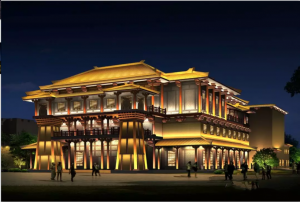 (5) Low-pressure sodium lamps-The discharge tubes of low-pressure sodium lamps are long tubes, usually bent into a “U” shape, and placed in a laminated outer glass envelope that is evacuated and coated with an infrared reflective layer to achieve energy saving and improve light Effective purpose. Low-pressure sodium lamps are the most efficient of artificial lighting sources, about 2001m / W (twice fluorescent lamps and 10 times tungsten halogen lamps). But because it is only radiant monochrome yellow Light, it is impossible to distinguish various colors under this kind of lamp lighting. Its main application is the road that does not require light color.Road lighting, tunnel lighting, security lighting and similar outdoor applications.
(5) Low-pressure sodium lamps-The discharge tubes of low-pressure sodium lamps are long tubes, usually bent into a “U” shape, and placed in a laminated outer glass envelope that is evacuated and coated with an infrared reflective layer to achieve energy saving and improve light Effective purpose. Low-pressure sodium lamps are the most efficient of artificial lighting sources, about 2001m / W (twice fluorescent lamps and 10 times tungsten halogen lamps). But because it is only radiant monochrome yellow Light, it is impossible to distinguish various colors under this kind of lamp lighting. Its main application is the road that does not require light color.Road lighting, tunnel lighting, security lighting and similar outdoor applications.
(6) High intensity gas discharge lamp (HID).
 High-voltage, high-voltage bell lamps, and metal halide lamps are all high-intensity gas discharge lamps (H) I). They are characterized by short high-standard arc-less electric tubes. The discharge load of the tube is greater than 3WrR. Gas discharge lamps are more efficient than incandescent lamps. This makes them more suitable for accent lighting and floodlighting of large-scale commercial projects. Disadvantages of this type of light source include. Due to the large beam ruler and high power, accurate light control cannot be performed, and the ballast on the lamp is not changed. The power of the lamp cannot be changed, and the color and color persistence are poor (the system is a halogen lamp); the cost of the lamp is high, and the light cannot be adjusted at will. The main application of color rendering is high-pressure mercury lamp, which is the simplest high-intensity gas discharge lamp.Induction lamp (QL)-An induction lamp is also an electrodeless gas discharge lamp (also known as an electrodeless fluorescent lamp). The energy required by this lamp is coupled to the discharge through a high-frequency field, and the transformer-like coil can produce an effective discharge. Induction lamps are another form of back-type fluorescent lamps. No strobe, can start and restart instantly (time is less than 01). The electrodeless fluorescent lamp has a long life. The electrodeless fluorescent lamp is especially suitable for lighting in some places where maintenance and replacement of the lamp are difficult.
High-voltage, high-voltage bell lamps, and metal halide lamps are all high-intensity gas discharge lamps (H) I). They are characterized by short high-standard arc-less electric tubes. The discharge load of the tube is greater than 3WrR. Gas discharge lamps are more efficient than incandescent lamps. This makes them more suitable for accent lighting and floodlighting of large-scale commercial projects. Disadvantages of this type of light source include. Due to the large beam ruler and high power, accurate light control cannot be performed, and the ballast on the lamp is not changed. The power of the lamp cannot be changed, and the color and color persistence are poor (the system is a halogen lamp); the cost of the lamp is high, and the light cannot be adjusted at will. The main application of color rendering is high-pressure mercury lamp, which is the simplest high-intensity gas discharge lamp.Induction lamp (QL)-An induction lamp is also an electrodeless gas discharge lamp (also known as an electrodeless fluorescent lamp). The energy required by this lamp is coupled to the discharge through a high-frequency field, and the transformer-like coil can produce an effective discharge. Induction lamps are another form of back-type fluorescent lamps. No strobe, can start and restart instantly (time is less than 01). The electrodeless fluorescent lamp has a long life. The electrodeless fluorescent lamp is especially suitable for lighting in some places where maintenance and replacement of the lamp are difficult.
Third: LED energy-saving lamps
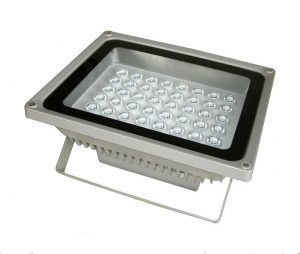 LED light emitting diode is a solid-state semiconductor device, and its light emitting principle belongs to electroluminescence. LEDs are available in red, green, blue, yellow, amber and other colors, as well as white LEDs with different structures. The ultimate goal of LED development is high-power, high-brightness white LEDs to replace traditional light sources. There are also white light LEDs with different structures to replace the traditional light source. LD theoretical life can reach 100,000 hours. At present, the light efficiency can reach 32W beyond incandescent light sources and there is still room for improvement. LED is made of non-toxic materials, which will not cause pollution to the environment and can be recycled. The typical uses of LEDs are display screens and indicator lights. They are used to decorate floodlighting lamps that have been sculpted. In total, the lamps have been passed down from the hard generations. Zumeinai lamps. ED lighting period bright lamps that can be applied to the landscape of round forests have appeared, including ordinary floodlights, underground floodlights, underwater lights, lawn lights, etc. The ultimate goal of LED development is yellow, yellow and other colors. There are also white LEDs with different structures to replace the traditional light source. The technology used for decoration has also matured, and is widely used in signboards and light sculptures. LED melamine lamps are gradually replacing traditional melamine lamps. LED floodlights that can be applied to garden landscapes have appeared, including ordinary floodlights, underground floodlights, underwater lights, lawn lights, etc.
LED light emitting diode is a solid-state semiconductor device, and its light emitting principle belongs to electroluminescence. LEDs are available in red, green, blue, yellow, amber and other colors, as well as white LEDs with different structures. The ultimate goal of LED development is high-power, high-brightness white LEDs to replace traditional light sources. There are also white light LEDs with different structures to replace the traditional light source. LD theoretical life can reach 100,000 hours. At present, the light efficiency can reach 32W beyond incandescent light sources and there is still room for improvement. LED is made of non-toxic materials, which will not cause pollution to the environment and can be recycled. The typical uses of LEDs are display screens and indicator lights. They are used to decorate floodlighting lamps that have been sculpted. In total, the lamps have been passed down from the hard generations. Zumeinai lamps. ED lighting period bright lamps that can be applied to the landscape of round forests have appeared, including ordinary floodlights, underground floodlights, underwater lights, lawn lights, etc. The ultimate goal of LED development is yellow, yellow and other colors. There are also white LEDs with different structures to replace the traditional light source. The technology used for decoration has also matured, and is widely used in signboards and light sculptures. LED melamine lamps are gradually replacing traditional melamine lamps. LED floodlights that can be applied to garden landscapes have appeared, including ordinary floodlights, underground floodlights, underwater lights, lawn lights, etc.
Performance characteristics of special LED flood light in landscape area
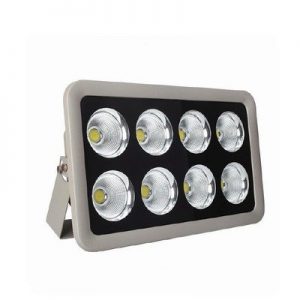 1.The internal and external anti-vibration structure design is adopted, which effectively solves the problems such as the bulb falling off due to strong vibration, shortening the life of the bulb, and breaking the bracket.
1.The internal and external anti-vibration structure design is adopted, which effectively solves the problems such as the bulb falling off due to strong vibration, shortening the life of the bulb, and breaking the bracket.
2.Using high-efficiency gas discharge lamp as the light source, the lamp has a long service life of more than 10,000 hours, which is especially suitable for outdoor unattended lighting in large areas.
3.Using light alloy material and high-tech spraying technology, the shell will never rust and never corrode.
4.New technology such as piping is used to ensure the integrity of the shell, reliable sealing, waterproof and dustproof.
5.It has good electromagnetic compatibility and will not cause electromagnetic interference to the surrounding environment.
6.The overall heat dissipation of the lamp is good, which can reduce the probability of failure.
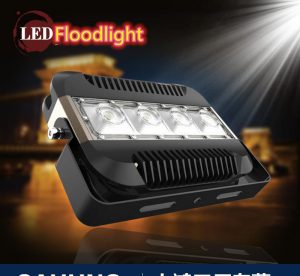 LED flood light advantages
LED flood light advantages
The floodlights are bright in color, good in monochromaticity, soft in light, low in power, long in life, and emit light for up to 50,000 hours. Moreover, its LED flood light has a small body, is easy to hide or install, is not easy to be damaged, has no heat radiation, is beneficial to protect the illuminated object, and has a wide range of applications. The lamps are equipped with scale plates for easy adjustment of the irradiation angle. The LED flood light is controlled by the built-in microchip. In small engineering applications, it can be used without a controller. Such as dynamic effects, you can also achieve chase, scan and other effects through the control of DMX.
The significance of LED lighting in landscape areas
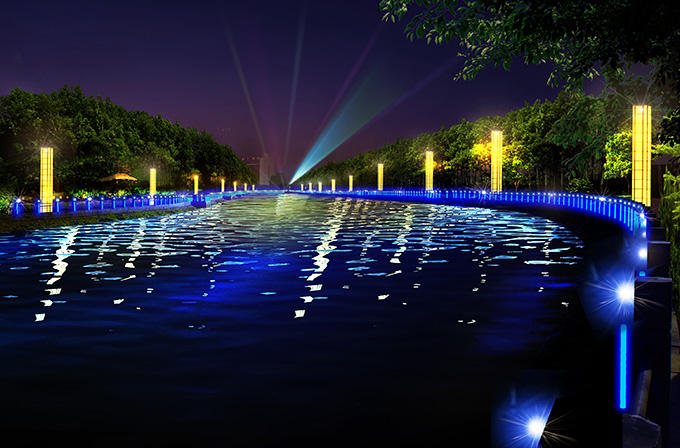 In today’s life, the use of lamps is very much. LED landscape lights are a kind of decorative lights that make LEDs a good source of decoration. Usually, they have better decoration. Compared with others, it is more practical and has a longer life, and at the same time, it is more beautiful in shape. According to the different occasions, LED landscape lights will have different designs, which will look more beautiful and coordinated. LED landscape lights are now installed in many public places, because its installation can improve the aesthetics to a certain extent, but also consumes less energy. LED landscape lights are decorative lighting using L ED as a light source, which is ornamental and Illumination, and more energy saving than traditional light sources, longer life. The shape is simple, which reflects the design concept of the popular lighting lamp post. The digital color light tube is adopted to realize the effects of color chasing, scanning, gradation and flicker through the intelligent digital controller, which has a strong environmental influence. The detailed decoration of lighting facilities highlights the historical and cultural connotation. Lighting is a modern technical method. In use, changes and adjustments should be made according to the physical shape and cultural characteristics of the object being illuminated. The lighting effect cannot be ignored and the consideration of details must be ignored. In its design and design, it caters to the historical and cultural atmosphere of the square, and uses decorative symbols and decorative forms consistent with historical culture, including repetitive arrays of patterns and decorative carvings. The bronze background and gold embellishment colors that match the fountain are extracted in color. The lighting facilities accentuated the strong cultural accumulation of the square in the grasp of the details, and constructed an emotional realm consistent with the artistic temperament of the architectural landscape.
In today’s life, the use of lamps is very much. LED landscape lights are a kind of decorative lights that make LEDs a good source of decoration. Usually, they have better decoration. Compared with others, it is more practical and has a longer life, and at the same time, it is more beautiful in shape. According to the different occasions, LED landscape lights will have different designs, which will look more beautiful and coordinated. LED landscape lights are now installed in many public places, because its installation can improve the aesthetics to a certain extent, but also consumes less energy. LED landscape lights are decorative lighting using L ED as a light source, which is ornamental and Illumination, and more energy saving than traditional light sources, longer life. The shape is simple, which reflects the design concept of the popular lighting lamp post. The digital color light tube is adopted to realize the effects of color chasing, scanning, gradation and flicker through the intelligent digital controller, which has a strong environmental influence. The detailed decoration of lighting facilities highlights the historical and cultural connotation. Lighting is a modern technical method. In use, changes and adjustments should be made according to the physical shape and cultural characteristics of the object being illuminated. The lighting effect cannot be ignored and the consideration of details must be ignored. In its design and design, it caters to the historical and cultural atmosphere of the square, and uses decorative symbols and decorative forms consistent with historical culture, including repetitive arrays of patterns and decorative carvings. The bronze background and gold embellishment colors that match the fountain are extracted in color. The lighting facilities accentuated the strong cultural accumulation of the square in the grasp of the details, and constructed an emotional realm consistent with the artistic temperament of the architectural landscape.

